Are you looking for some SEO tips to help increase your business’s visibility online— without investing in a course or book? You’re in the right place!
In this post, you’ll discover 15 actions you can do right away to make your business blogging more effective and profitable.
And…you don’t need to be a Search Engine Optimization (SEO) expert either! These straightforward tips are for solopreneurs who are stuck “doing SEO” but not knowing exactly what that means.
Simply put, SEO comes down to performing certain tasks that make it easier for people and algorithms to understand your website content and business. It is these tasks that can propel you above the competition and send more website visitors your way.
So, let’s talk about some totally doable, manageable SEO tactics for your business blog and how to implement them.

1. Identify the Key Phrases Your Avatar Searches for Online
From your own personal experience, you already know that people type or speak phrases into search engines to find the information they’re looking for.
So, it makes sense that you should incorporate those phrases (aka keywords) into your content. That way, you have an increased chance of search algorithms displaying your business blog when your avatar performs a search.
Think of search engines like Google and Duck Duck Go as matchmakers. Google’s goal is to match its users up with the best and most accurate information on the internet. Your role as a content marketer is to create the best and most accurate information to qualify as a good match!

To choose the best content topics, you need to research:
- which keywords and subjects interest your avatar
- the number of monthly searches of those keywords
- how competitive the keywords are
- whether the keywords are ranking on page one
- the keywords your direct competitors are using
Research identifies the subjects and topics to focus your content on. It’s important to research first because some keywords won’t bring you traffic and website visitors. They are either not popular or already dominated by other websites.

After you identify keywords, it’s time to analyze whether they are relevant to your industry as well as your products and services. Profitable content aligns with your customer’s journey AND leads prospects to your solutions.
It makes no sense to create content for topics that have little to do with your business.
PRO TIP: Use long-tail keywords (a phrase with three or more words) to attract more targeted visitors to your site. You may get fewer visitors, but they will be more interested in your content—and, that’s good for business.
Bonus SEO Tips for Keywords
✅ Use a keyword phrase/topic only once. Then make that blog post the most robust piece of content about that topic by adding to the post and updating it to maintain its freshness and boost its ranking for that particular topic.
✅ Research keywords for free with Neil Patel’s Ubersuggest.
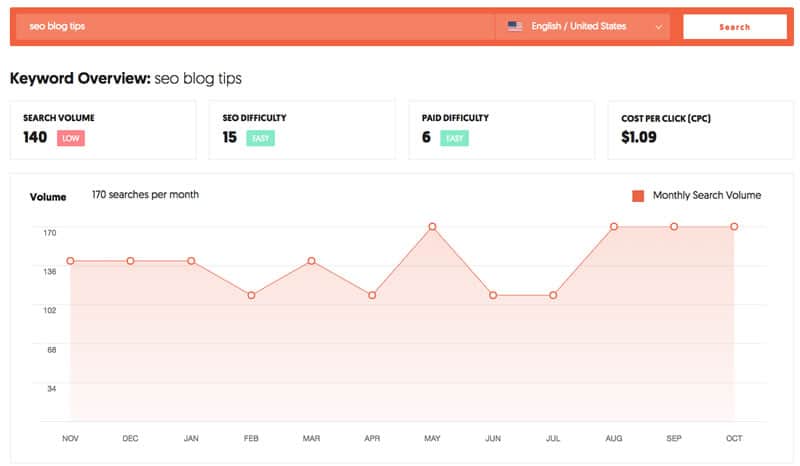
2. Use Keywords Strategically
Now that you know which keywords (aka topics and subjects) to use for your business blog’s content, be strategic.
First, don’t overuse your keyword throughout your post. Overuse is referred to as “keyword stuffing.” Algorithms view it as spammy, which hurts your website’s performance in search. People won’t appreciate it either since it makes for awkward reading.
Pro Tip: Use an SEO plugin for your website, such as Yoast SEO, to monitor keyword frequency in each post.
Second, choose a few different ways to convey your key phrase and use terms that provide context. Utilize synonyms as well as semantically similar and related terms.
This practice gives you the opportunity to rank for similar key phrases. Plus, it helps search algorithms better understand your content by understanding the context.
Finally, be sure to distribute your keyword phrase and synonyms evenly throughout your content, not just in the body, in places such as:
- title
- headings (H2, H3, H4)
- captions
- anchor text
- meta description
- image alt tags*
- image file names
* Not sure about alt tags? No worries! I’ll cover this more below. 😉
Bonus SEO Tip for Strategic Keyword Use
✅ You can find keyword synonyms and semantically related terms for free in Google’s search results! Type your keyword into Google and look for these sections:
“People also ask”
“Related searches”
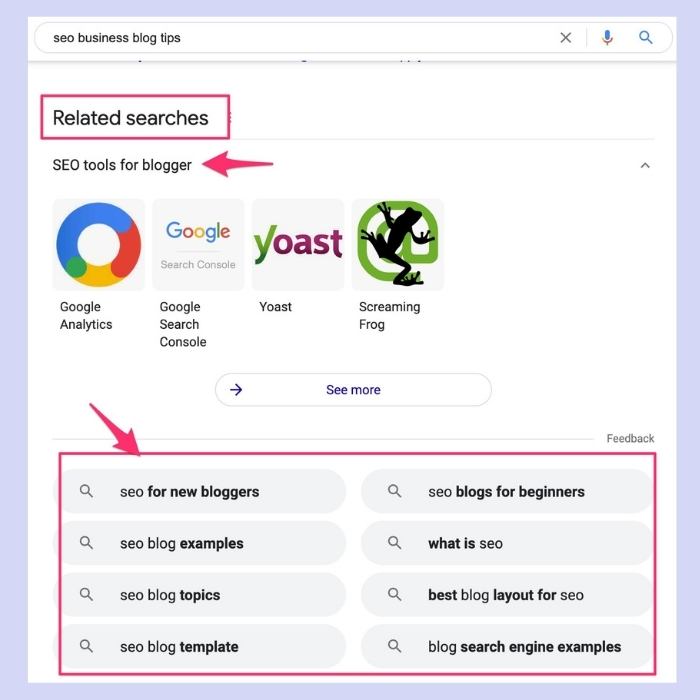
3. Cover Topics in Detail (Skip the 500 Word Posts)
The days of the 300-word post are gone. Even 500 words aren’t going to cut it.
Studies show that longer blog posts perform better—both in search and on social media. So, that means the length of your blog post affects your business’s online visibility.
The improved performance of long-form content is less about word count and more about quality. Obviously, the longer and more in depth you go on a topic, the higher the quality and the value of the post.
Depending on your industry, aim for comprehensive content that’s at least 1,200 words. It tends to rank higher and get shared more.
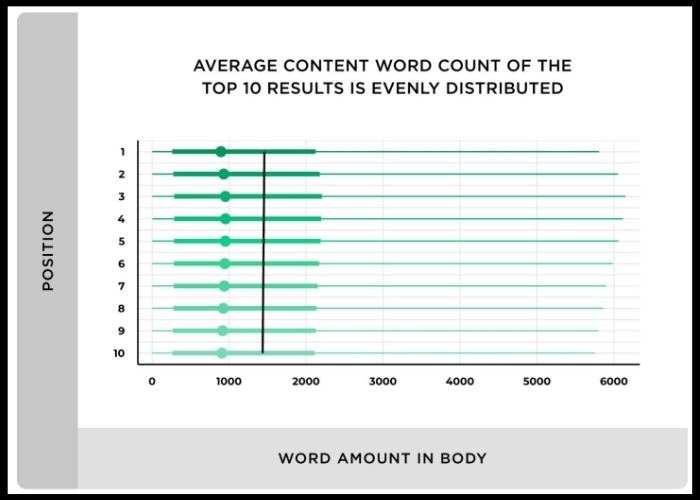
Not convinced yet? According to Curata, longer, more in-depth blog posts generate 9x more leads than short ones!
And, from an SEO perspective, longer posts naturally have multiple keywords sprinkled throughout the content. So, this means longer posts have greater chances at ranking and getting discovered by prospects.
Bonus SEO Tip for Long Form Content
✅ If you have blog posts with lower word count, now’s your chance to beef them up. These are pages that Google has likely indexed and pages that have some SEO equity already. Return to your old posts and perform content maintenance, such as:
- Update links (internal and external)
- Add more current information
- Make the post more robust and detailed
- Quote new data sources
- Optimize the post for search engines with the tips here!
4. Link to External Content
If you use information from another website, link to it. Don’t claim others’ information as your own. Tell your readers where you got it.
Linking to outside content does several things for your website:
- Connects it to the world outside your own blog
- Shows you’ve done your research
- Supports your points with reputable data and examples
- Encourages others to link to you
- Sends trust signals to Google
Linking to other websites is just good form, and it helps your website.

Avoid linking to spammy or malicious sites because that won’t bode well for you. Site visitors will trust you less if you send them to a bad site. Plus, you don’t want to harm your reputation or your rank!
Bonus SEO Tips for External Links
✅ If you want transfer link equity (aka ranking power) to the external site, make the link “follow” the site. This is good to do if the site you’re linking to is authoritative, reputable, and related to your industry.
Otherwise, use a “nofollow” link to avoid passing link equity to the external site.
✅ Also, if you use WordPress, install the Broken Link Checker plugin by WPMU Dev. Activate the plugin quarterly to identify your site’s broken links and fix them.
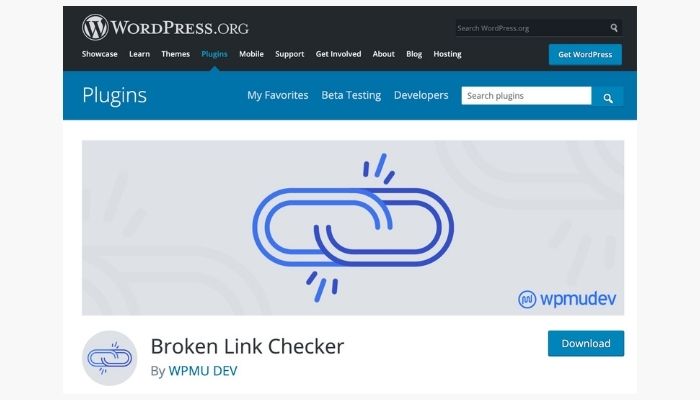
✅ Per Quicksprout, limit your links to 100 per page for a good user experience and to avoid looking like a spammer.
5. Link to Your Own Internal Content
While you’re adding links to your post, don’t forget to link to your own internal web pages. If you’re just starting your blog, get a few posts going, then go back and link them to each other.
Linking to your other related content helps your readers see what else you have on your blog. And if you’re in luck, your other posts will keep those readers around for longer, which is good for dwell time.
Dwell time can benefit your business by helping prospects along the customer journey. And, it indicates to algorithms that your website content is worthy of consumption.
In addition to guiding readers to your other pages, internal linking provides structure to your content architecture. Page hierarchy draws a map for Google to better understand your content and your niche.

While internal linking is a simple action to take, it can become burdensome. Over time, you’ll risk linking to older posts far more than more recent content.
Set time on your calendar to review your older content and link it to the newer posts. Sending link juice to the latest content signals the value of it to search engines so that it gets indexed and noticed.
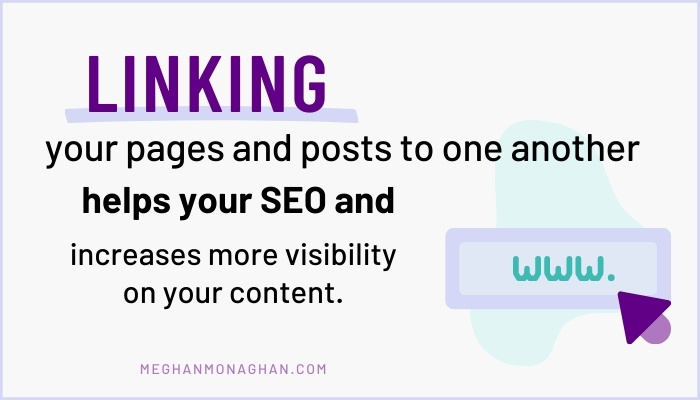
Bonus SEO Tip for Internal Linking
✅ Eventually, you won’t recall the topic and keywords of every post you’ve ever published. Invest in the paid version of the Yoast SEO plugin for internal linking suggestions.
6. Optimize Images
Images are a must if you want to provide a great user experience. People prefer visuals. Images break up text and make your web pages easier to read. Additionally, visual content communicates concepts and helps our brains process information faster.
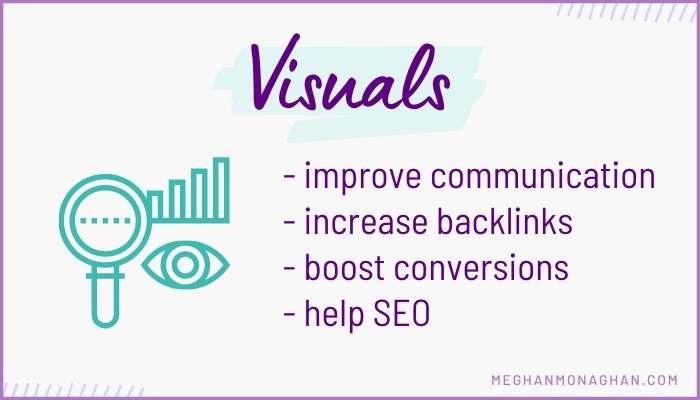
Visual content also helps improve your SEO. Visuals keep people on your site longer, and they help search algorithms understand your content better. And, visuals like videos and infographics can increase your backlinks.
Plus, people actually perform searches online using visuals, especially for products like clothing, furniture, and groceries. This is called “visual search,” and it is predicted to increase digital commerce revenue by 30%. In fact, over 70% of internet searches in the United States are as a result of visual search.

When using images, optimize them just like you do your blog posts. Your formatting matters so that both people and algorithms find and understand your visuals, which improves visibility and ranking.
- Use the keyword in the image file name.
- Add keywords to image descriptions and alt tags.
- Make each image file size small (under 100 kb).
- Include a caption.
Digital marketing expert Neil Patel suggests that you include an image about every 150 words. For a blog post over 1,000 words, that’s a lot of images! Try screenshots, graphs, and free stock photos as images in your blog posts.
What is an Alt Tag?
The alt tag is text that describes your image and its function on the page.

Alt tags tell algorithms what your image is about. More importantly, alt tags help the visually impaired to understand your images. “Screen readers” are browsers that read the alt tag to describe the image to those who have trouble seeing the image.
Most content management systems (like WordPress) and website design platforms (like Squarespace) have a place to include the alt tag for each image.
Bonus SEO Tip for Image Optimization
✅ An important factor in search ranking factor is load time. So, while visuals are a terrific and manageable way to boost your rank, they can slow your site down.
✅ Pay attention to your file formats. PNG and SVG files look great, but often they are too large in file size. Consider JPG and GIF formats, the latter which supports transparent backgrounds.
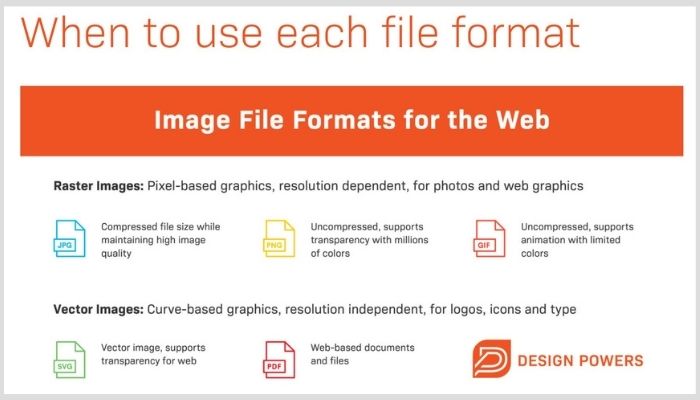
The newer WebP format is promising. It has a good quality image and a small file size. However, it is neither supported by all content management platforms nor all browsers at this time.
7. Publish and Update Content Regularly
There are more than 600 million blogs worldwide. And, we know that blogging for business is extremely effective.
One way is to publish content regularly and make sure to keep it updated.
Fresh content attracts new visitors and existing prospects. It gives them a reason to visit your website. And, this site traffic helps your SEO.
Experts mention that content recency is a Google ranking factor. That means the freshness of your content affects your page’s rank.
According to Moz, “websites that add new pages at a higher rate may earn a higher freshness score than sites that add content less frequently.”
Thus, regular publishing and updating makes a difference. It helps you maintain or improve your rankings as well. Obviously, if your content is outdated, then competitors’ newer, better blog posts may outrank you.
However, I perform MANY online searches in the marketing niche, and there are frequently older articles still appearing at the top of page one. Newer content doesn’t always best older content. Authoritative content that’s kept updated may outrank new blog content, so keep that in mind when you wonder if updating matters.

Although there’s concern about content shock (aka too much content for consumers to consume), new and updated content helps you stay competitive in your niche and rank for your desired keywords. You also increase your website traffic, which is important for lead generation.
Generally speaking, more blog posts result in more traffic. That said, your version of “regular publishing” doesn’t have to mean daily. Weekly or bi-weekly is more sustainable and manageable as a solopreneur, especially if you’re investing in long form content.
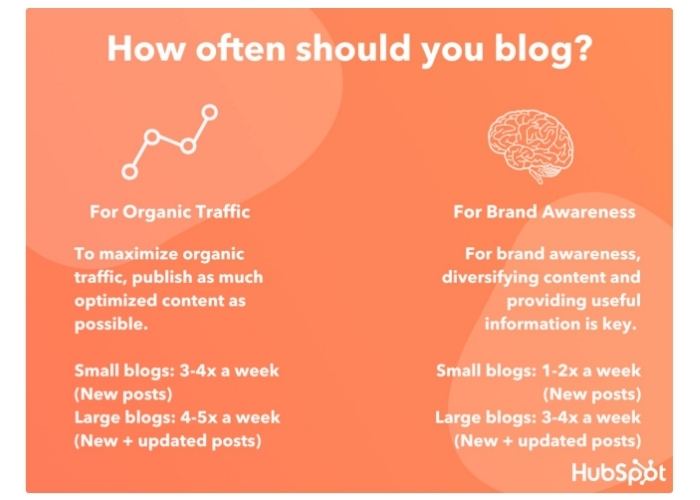
Once a week or every other week is frequent enough content to signal that your business is still active and that you’re an authority in your area of expertise. You’ll still contribute to raising brand awareness. And, it gives you enough content to repurpose into other formats to have a presence across multiple platforms.
Bonus SEO Tips for Regular Blogging and Fresh Content
✅ The key with frequent publishing is consistency. Yes, more blog posts equate to more traffic. However, inconsistency produced the worst results according to Orbit Media.
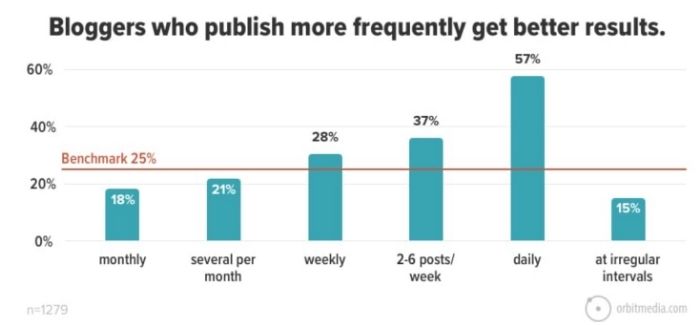
✅ Choose your publishing frequency and stick to it by planning ahead with a content strategy and calendar.
✅ According to Backlinko, freshness includes recently published or updated content, significant content updates, and frequency of page updates.
8. Break Up the ‘Wall of Text’
Did you know that almost half of readers skim blog posts? 43% to be exact.
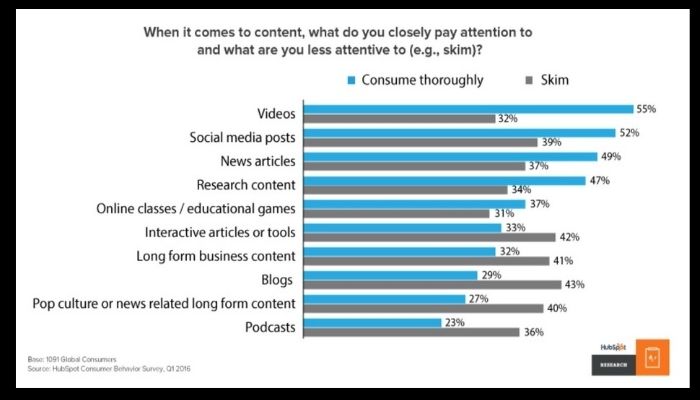
Whether you write shorter posts or long form content, use formatting to break up the text. Frequent visual breaks in text assist your audience in skimming and understanding your main points quickly and easily. Readers can also find what they’re looking for more easily.
Overall, strategic formatting improves user experience.
For example, when you use H1, H2, and H3 tags appropriately, you’re structuring your post like an outline with headings and subheadings. This helps both your readers and Google better understand your content.
Images, blockquotes, and videos further break up text and provide context so that skimming is easy for your audience.
All of these elements also help with SEO since they’re the perfect place for keywords, content hierarchy, and context. After all, it’s your job to help search engines know what your content is about! And, good formatting does help, even if only a little.

Bonus SEO Tip for Blog Formatting
✅ If you’re using WordPress, one good method for formatting your blog posts is to use the Yoast SEO plugin. This plugin guides your formatting and structure to optimize your content for both algorithms and people. It’s not perfect, but it’s a great starting point.
9. Write Original Content and Publish Research Findings
Google pays attention to how your audience and visitors interact with your content. If visitors stick around on your site for a while, then that’s a signal that your site is relevant and good. And, original content tends to outperform posts that simply re-hash information already available online.
According to Yoast, original blog posts are the best way to drive traffic to your website.
Not only do people prefer to read interesting, original content they also like to link to it. And backlinks are one of Google’s biggest ranking factors. The more quality backlinks you have, the more likely Google will see your site as an authority in your industry.

Besides being original, consider coming up with your own research and publishing the results. This tactic makes you “the source.”
As the source of data and findings, you’ll acquire more social shares and backlinks. Original research is one way to propel your authority in your niche. And, this will not only help your SEO but also your visibility and clout.
Buzzsumo, Brian Dean/Backlinko, Orbit Media, and GrowthBadger are examples of brands who invest in original research that results in tons of backlinks, shares, and authority.
Original content highlights your expertise and knowledge. It shows off your experience and convinces people that you are a “subject matter expert.”
And, original content or research means you avoid duplicate content. Duplicate content is identical content found on multiple pages on your site. Too much duplicate content can hurt your site’s ranking since it competes with itself.
Bonus SEO Tips for Original Content and Research
✅ Make sure that your original topics and research are of interest to your target market. If not, you could waste a lot of time.
✅ Don’t forget to incorporate keyword phrases into your original posts. Otherwise, it will be tough for people to find your content.
✅ Doing your own research is very time consuming. Consider partnering or collaborating with another business to share the work and make the task a little less daunting.
10. Mind Your Grammar
Make sure you always use correct grammar in your posts. Typos and other grammatical errors aren’t fun to read. In fact, they’re annoying! They hamper the reader’s experience.
Sloppy grammar isn’t good for your business either. What does poor grammar say about your attention to detail and expertise? Perfection is not required. A mistake or two is acceptable. But, bad grammar and typos can make readers leave your site and feel negatively about your website. That won’t help your SEO, that’s for sure!
If you’re thinking that search engines don’t care about your grammar, you’re wrong.
According to Alexa, search engines rank pages using signals from their grammar, syntax, and spelling. So always check before publishing! Online grammar checking tools, word processing programs, and grammar-savvy friends are all great for catching errors.

Bonus SEO Tips for Grammar Help
✅ Not great with grammar? No problem. Write your blog posts in Google Docs or use an app like Hemingway to guide your work.
✅ Another business writing tip is to read your blog post out loud. This alerts you to grammar problems and areas that need more editing.
11. Integrate Social Media for Amplification
Social media is effective at amplifying your blog posts. In other words, social platforms are a place where you and your tribe can promote your content.
Social media is a great outlet for sharing your content. That’s why you must include a social sharing plugin to make it easy for people to share your blog posts.

Technically, social media is not a ranking factor in Google. However, social media indirectly helps your search engine optimization. It amplifies the ranking factors Google considers.
In terms of content distribution and social proof, social media is a valuable addition to your SEO strategy. If you don’t have at least one social media account linked to your blog content, please seriously consider getting one.

Bonus SEO Tips for Amplification
✅ Use hashtags on social media! Hashtags are basically keywords that signal to people and to algorithms what your content is about.
✅ Remember that sometimes social media content appears in search results pages. And, some social platforms are basically search platforms too (like Pinterest), so it helps to use hashtags for more visibility across the board.
✅ Social media can be a massive marketing productivity killer. To avoid getting bogged down with scheduling, consider an AI-driven tool like MissingLttr as a way to make posting faster.
13. Use Categories and Tags Appropriately
When I first set up my business blog, I didn’t give much thought to categories and tags in WordPress. Not until I started publishing regularly and learning SEO blogging did I understand the importance of planning categories and tags.
Categories are general, broad groupings of your posts that represent your blog’s topic. They are hierarchical, meaning you can have sub-categories.
Tags, on the other hand, are meant to describe the details of your posts. They are not hierarchical.
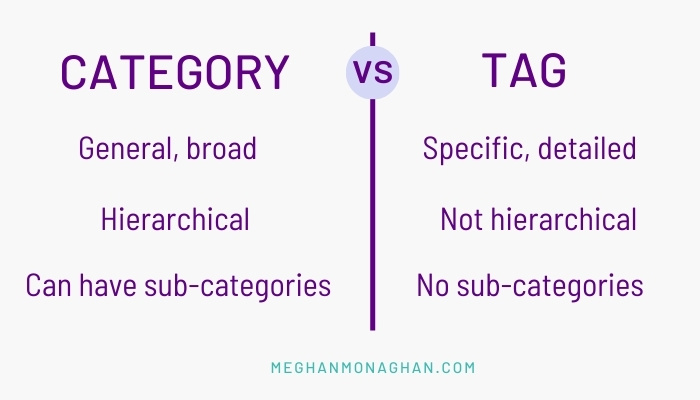
Think of your categories and tags like an outline and framework meant to organize your content into a hierarchy of:
- importance (more for search engines)
- understanding (more for users)
Limit categories to the main topics you blog about. Select topics and terms that people are searching for in search engines.
Think of tags like popular keywords that you use to loosely relate your posts together. In other words, you can use tags across multiple categories.
There is no tag limit in WordPress. However, you don’t want to use too many tags! Choose tags that make sense and that help organize the topics that fall under your categories.
One change I made was to eliminate tags altogether. As a WordPress user, I found tags created more work for me since I had to manage them. But it’s a personal choice.
Bonus SEO Tips for Categories and Tags
✅ Be careful not to use categories and tags that are the same where one is plural or a different version of the same word. Choose one version of the word, not both. (For example, use “strategy” OR “strategies” as tags, not both.)
✅ Always categorize your posts! Don’t leave them in the default “Uncategorized” category. (You can change the default category of “Uncategorized” in WordPress, and I suggest you do that.)
13. E-A-T Your Way to a Better Ranking
There’s a lot we don’t know about how Google ranks sites. But, we do know that Google wants to suggest the best, most reputable, and accurate content for its users. And one way it does that is by using “E-A-T” to evaluate websites.
E-A-T stands for expertise, authoritativeness, and trustworthiness.
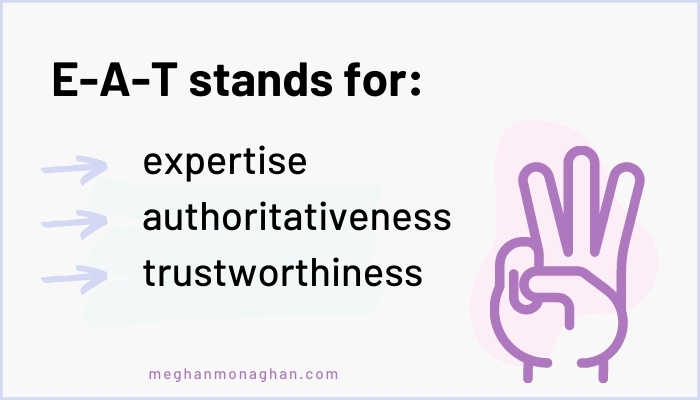
The E-A-T guidelines are like a rating system that uses certain factors to analyze your site to understand a brand’s credibility, reputation, and expertise in a specific area.
These factors include your website, its content, who is authoring that content, and any connections and links to other websites. Together, these aspects add up to form a picture of your brand as a reliable source or not. But, there’s still much mystery to it! 😉
While E-A-T may or may not directly affect your ranking, it’s likely a complementary factor. (Wordstream)
If you think about it, consumers care about these factors too. So, E-A-T isn’t limited to SEO only. It could improve your conversions as well.
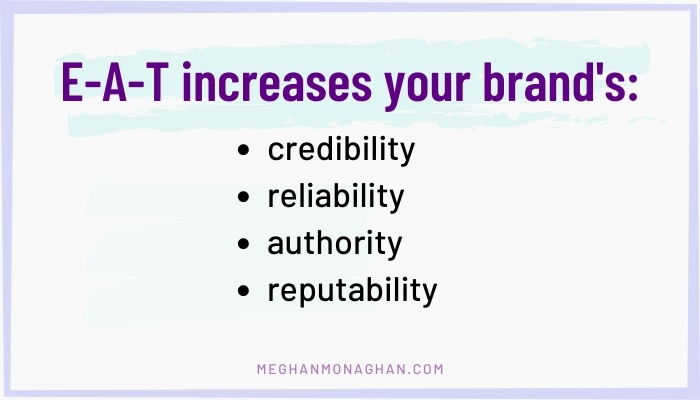
Here are some things related to business blogging that you can do to improve your E-A-T:
- Use your real name, photo, and contact information on your site and in your authorship for blog posts
- Share your qualifications, credentials, awards, and experience in your author bio
- Spend the time to create and publish relevant, quality, and original content
- Link your content to authoritative research and data to give your content more clout
- Acquire links from authoritative, credible websites in your industry
How do these small things help? They signal to your audience and to Google that you are reputable and knowledgeable. And, they also make your content appear accurate and reliable.
Bonus SEO Tips for E-A-T
✅ Focus on relevant blog topics that are within your niche. For example, a content strategist writing about content optimization makes sense. A business coach blogging about investment advice does not.
✅ If you can carve out the time, guest blog post on authoritative websites where you can establish yourself as an expert.
✅ No time for guest blogging? Not a problem! Hire an expert to write for your site. Just make sure it’s someone who is already an authoritative author for an expert publication.
14. Analyze the Competition
I considered adding a section about choosing good URLs for SEO. However, I think that when you want your business blog to rank higher, learning from the competition may outweigh perfect URLs.
As we’ve already covered, there is a lot of content out there. Competition is high. A poorly formed URL isn’t as damaging as mediocre, unoriginal blog content that never gets noticed because the competition is outperforming you.
You can’t possibly know what you’re up against without analyzing the brands that are competing with you in search.
Don’t make the mistake of limiting yourself to brands who offer similar products and services. Since this is about earning your way to the top of search engines, look at the businesses who are also content competitors.
For example, I don’t sell software like Hubspot, but I write about very similar topics. Therefore, I’m often trying to outrank them in search, which makes them a content competitor of mine.

Performing competitor analysis gives you a head start on what direction to go with your content. You get to see what topics and subjects are resonating with people. Also, you can identify areas of expertise where you can differentiate yourself.
Competitor analysis is a terrific way to improve your marketing productivity. You’ll speed up your own work while reducing the time you could have wasted on blog post topics that aren’t going to help your search visibility.
Bonus SEO Tip for Analyzing the Competition
✅ SEO tools like Semrush, Ahrefs, and Ubersuggest save you time by identifying your content competitors and showing you valuable metrics related to SEO and content.
✅ Run content/SEO reports at least quarterly to assess the competition as well as your own performance.
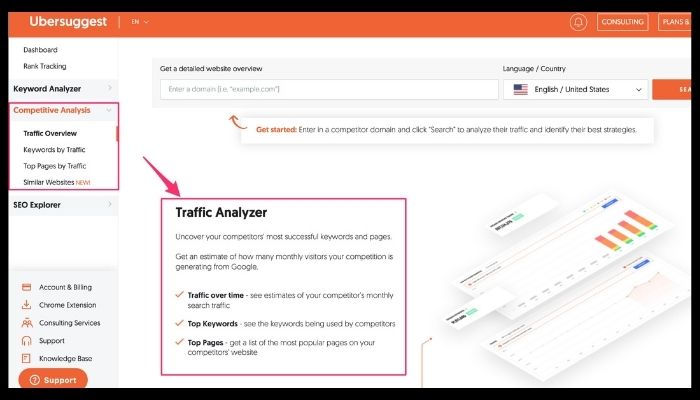
15. Make Your Website Mobile Friendly
There’s no doubt about it, people access the internet from mobile devices all day long. Mobile devices are more popular than personal computers these days.
Google now indexes sites on a “mobile first” basis. In other words, Googles uses the mobile version of your site as its starting point for indexing and as its baseline for determining site ranking.
Your website had better be optimized for mobile viewing—both for human users and for search algorithms.
What does this mean for your business blog? With mobile-first design, make sure your content is:
- Easy to read (no grey, 10 pt fonts please)
- Easy to navigate
- Short sentences/compact paragraphs
- Not too busy (include white space)
- Fast loading (fast site speed)
Check your mobile friendliness with Google’s test. The lack of a mobile-friendly experience can possibly impact your ranking negatively.

Bonus SEO Tips for Mobile First Design
✅ Consider using a cache plugin on your site to improve site load speed.
✅ Choose a website design or theme that supports quick loading times as well as easy content maintenance.
✅ Here are two sites to determine site speed and areas for improvement:
Incorporate These SEO Tips Into Your Business Blogging for Better Results
Why does a content marketer need to pay attention to SEO? Because SEO has become synonymous with content marketing when you want to increase visibility and attract more visitors online.
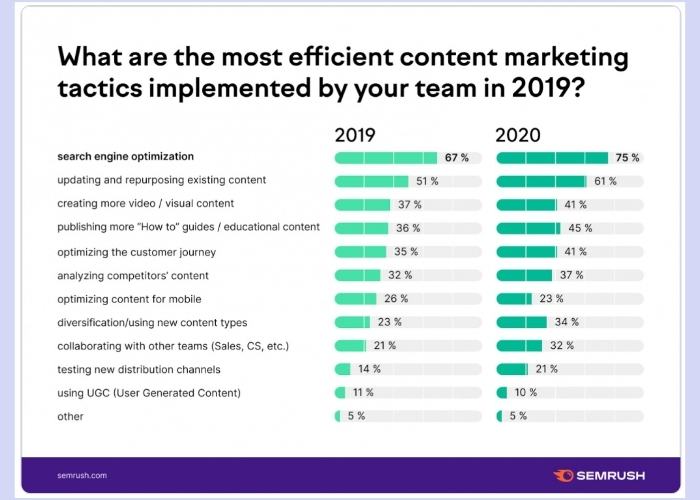
Of course, there are ways other than SEO to generate leads. But, if you’re using content to drive traffic to a website and get more targeted people noticing your brand, then pay attention to these SEO tips for your business blog.
You don’t need to know every detail about how search engines work. All it takes is a little knowledge and effort to take action. And, you’ve got a great place and checklist above to get started!
UPDATED OCTOBER 5, 2021 | PUBLISHED OCTOBER 14, 2018

Hi Meghan, it’s Jason here from Smart Human Blogger.
I just wanted to say “thank you” for providing these awesome SEO tips.
Your writing style is really easy to understand and I have learned a lot.
Looking forward to reading more of your content and connecting with you.
All the best to you…
Jason
Hello Jason! Wonderful to hear from you. I appreciate you reading my article and complimenting me, thank you! There’s always so much going on in the world of SEO, so it’s tough to choose which tips to discuss. I’m so happy you found value here. Keep in touch!